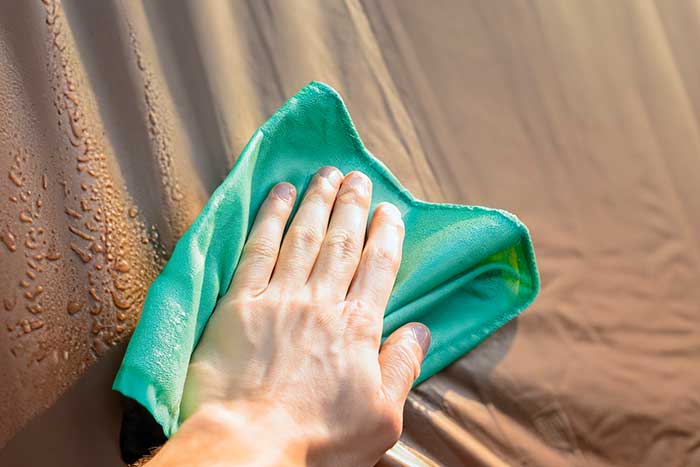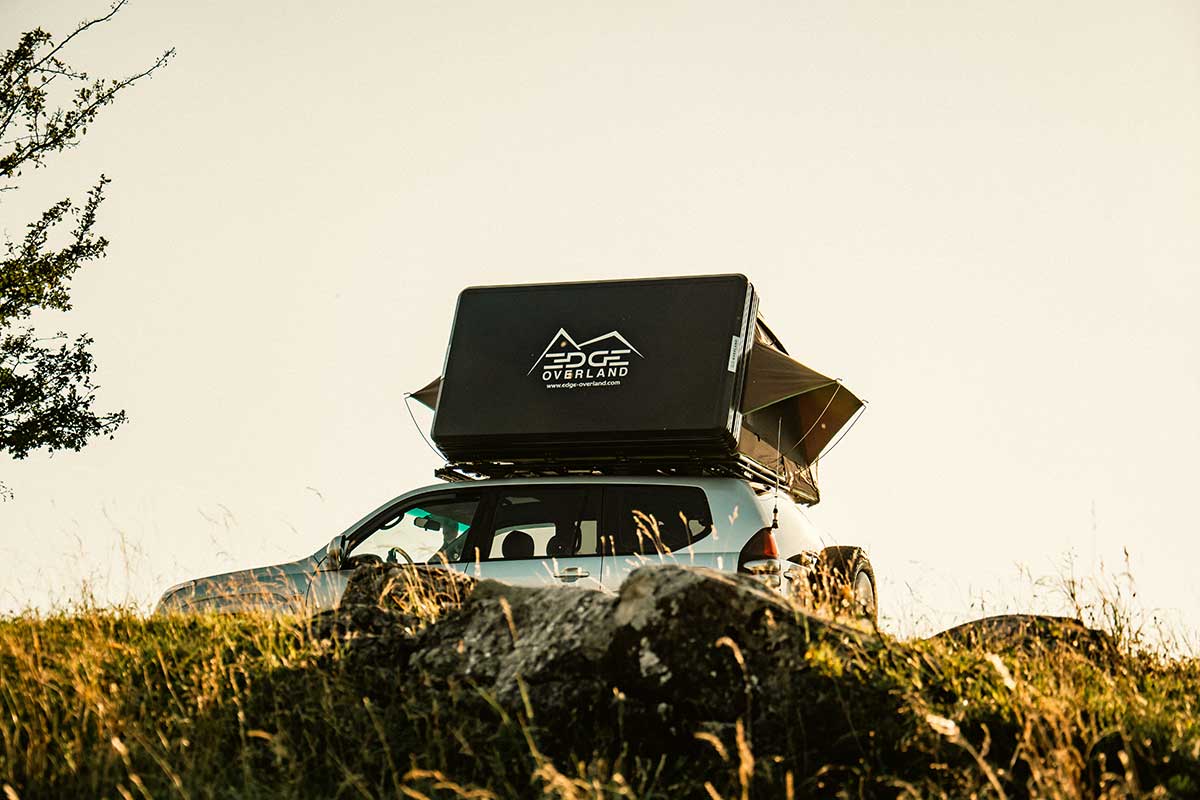Proven Tips for Extending the Lifespan of your Rooftop Tent and Car Awning for Decades

While the primary focus of this article is on rooftop tent maintenance, it's worth noting that the guidelines provided here are equally applicable to car awnings. Both these products share similar materials, warranting similar care and attention. At EDGE Overland, we take pride in crafting robust rooftop tents and awnings designed to withstand the rigours of travel and adventure. Our commitment to longevity hinges on the use of premium materials and components, ranging from metals to fabrics and meticulously chosen aluminum. This crucial aspect sets our premium offerings apart from cheaper alternatives, ensuring they endure the wear and tear encountered by travellers and adventurers on their journeys.
By following the key points we outline below, we can confidently guarantee that our rooftop tents and freestanding car awnings will serve you faithfully for many years to come:
1. Condensation
Condensation is a primary concern for any car tent, whether it's a rooftop tent or a traditional ground tent. Despite our efforts to minimise condensation through intelligent design techniques, material selection, anti-condensation mats, and other measures, understanding the underlying physics is crucial when using a rooftop tent. The warm and humid air exhaled by occupants can lead to condensation, especially in colder conditions, as water molecules accumulate on colder surfaces, resulting in moisture buildup.
To mitigate condensation, one effective approach is to promote air circulation whenever possible, allowing the warm, humid air to escape. During winter, it's advisable to utilise a diesel-style heater that generates dry, warm air and use the specially designed heating tube pockets in our rooftop tents to route the heating duct into the tent.
If you notice condensation buildup, typically visible on the canvas near the tent's top, take the following steps: upon leaving the rooftop tent, open all doors and windows fully to facilitate air circulation, which helps in drying these areas. In most cases, allowing 30 minutes to an hour for this process is sufficient, providing you with time to enjoy your breakfast and morning coffee.
2. Water & mold
Water accumulation, whether from spills inside the tent, condensation, or exterior rain exposure, if left sitting there for a prolonged period of time can ultimately lead to the growth of mold. When you seal your rooftop tent, it creates a relatively airtight environment, preventing any trapped water, from both inside and outside the canvas from evaporating. Over the course of a few weeks, mold can begin to develop due to microorganisms present in the water and on the surfaces. Once mold spreads extensively, cleaning the canvas becomes nearly impossible, thus necessitating replacement.
Therefore, our recommendation is as follows: in the event of rain when you need to close a wet tent, you can do so, but ensure it is reopened within 2-3 days to allow thorough drying. Ideally, whenever possible, allow the rooftop tent to dry completely, both inside and out, before sealing it. If you intend to store your car rooftop tent for an extended period, we strongly advise opening and airing it out before storage to prevent any unpleasant surprises.
This water and mold issue also applies to our freestanding car awnings, where the same practice of allowing the awning to thoroughly dry before closing is the best approach to follow.

3. Extensive mechanical stress
While we continually strive to enhance the durability and resilience of our rooftop tents, there's a point where further improvements become challenging due to the risk of excessive weight. Achieving the delicate balance between meeting essential strength requirements to create a reliable product and avoiding impractical heaviness in everyday use is crucial.
For this reason, we strongly advise against subjecting your rooftop tent to unnecessary stress, such as jumping inside it, vigorously shaking it from the inside while open, or even attempting to drive with it in the open position. Adjusting your car's position with the tent open is acceptable with care, but attempting to drive under these circumstances is a recipe for disaster.
Additionally, ensure that the clamps securing the rooftop tent to your car's roof bars or roof rack are properly tightened, eliminating any play. Even minor movement, especially during off-road conditions, can lead to significant vibrations and motion that may ultimately damage the rooftop tent.
Similar precautions apply to our car awnings. Despite the robustness of their arms, avoid putting unnecessary pressure on them or even hanging from them, as they are not designed for such usage under normal circumstances.
4. Inappropriate use
We aim to ensure that our rooftop tents and car awnings are user-friendly, minimising potential complications for our clients. However, there are a few important considerations, especially for those new to the world of rooftop tents:
When disassembling the elastic poles that secure the rainfly on rooftop tents, remember to start by removing the top part first and then pull out the pole from the frame. Attempting this in reverse order may create excessive tensile stress on the rainfly, potentially leading to damage.
If your rooftop tent doesn't close easily, check for potential causes. Ensure you haven't overpacked the interior with too much bedding or created high points in your packing, like stacking two pillows on top of each other. Avoid trying to forcefully close the top lid, as this can damage the panels, which can be challenging to repair. Verify that no canvas material is obstructing the proper closure of the lid. Ideally, the lid should close without significant effort.
When dealing with car awnings, if an arm isn't closing into position smoothly or correctly, confirm that you're following the correct closing sequence. Check for any canvas entanglements. If these aspects appear fine, ensure that the lockers on the legs are pointing downwards. Remember, if something seems to be out of place, it's likely a mistake has been made, so refrain from applying force. Take a step back, reevaluate the situation, and make necessary adjustments to avoid potential damage.
Published on: 29 September 2023
Last updated: 21 February 2024
Back to our Blog
